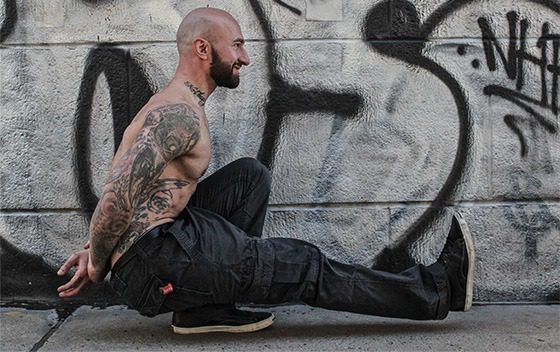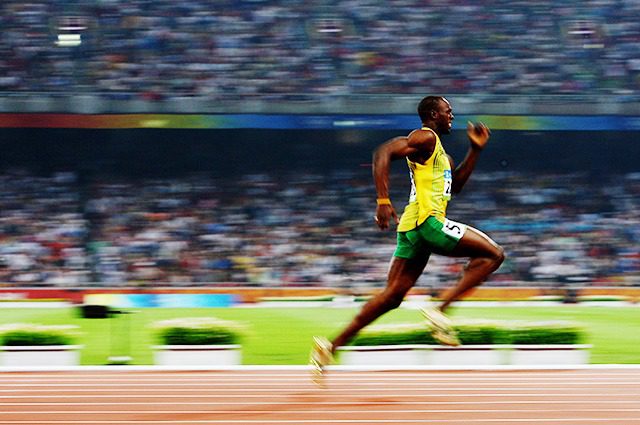Posterior Chain Exercises: 10 Glutetastic Moves
Sports Performance | Strength & ConditioningABOUT THE AUTHOR

Ben Crookston
Ben Crookston is the Founder and CEO of TrainHeroic. Prior to finding his home in the tech world, Ben ordered the Sampler off the career menu, teaching, coaching, and writing. He has an incredible family and back squats 500 pounds A2G.
And, while you’re going to get the biggest bang for your booty development in core lifts like Squats, Deadlifts, and Oly lifts that are cornerstones of your program, these exercises put the ASS in assistance and will ramp up your gains.
// Bodyweight Posterior Chain Exercises
Eccentric Partner Glute Ham Raises
This is a tough posterior chain exercise and a true marker of rock solid hamstring strength. What’s nice about this form of Glute Ham Raise, is that it’s fully scalable and beneficial for beginners and pros alike. When you’re able to hit these slowly and with stellar form, you’re set. These babies are incredible for increasing running speed and bulletproofing hamstrings from rapid contraction injuries.
Points of Performance
- Maintain a neutral spine without going into hyperextension
- Lower as slow as possible using hamstrings to determine speed of descent
- Partners should secure ankles with both hands and hold on tight
- Optional: Partners should take pics of your facial expressions as you contort and writhe…they’re priceless
Speed Skaters
Popularized by one of our favorite coaches, the “Pro-maker” Joe DeFranco, Speed Skaters can be a bodyweight or load bearing posterior chain exercise that give you an incredible pump and large motor recruitment. If you’re hitting the bodyweight option, apply Density Training principals to get the most out of ’em.
Points of Performance
- Chest and shoulders stay back and upright
- Back foot is rear elevated on a bench, front foot elevated on plate or step
- Squat deep into the heel one time, come up halfway, go back down and then all the way up (1 + 1/2 reps each time)
- Driving up and back through heel with speed
Pistol Squats
Frequently programmed by Jason Salyer in the Dynamic Athlete program, the pistol is an exercise that is just as good at developing your engine, refining squat patterns, and building balance as it is at looking cool in Instagram pictures #fitfam.
Pistols are a true assessment of mobility (ankle, hip, and upper back), balance, and coordination. Use the scaling options provided when just getting started.

Points of Performance
- On one leg, send hips back and down under control
- Weight should remain in on the outside corner of the heel
- Knee must track just the same as your traditional squat (over foot), avoid letting this trend inward
- Chest stays up and keeps back from rounding aggressively
Scaling options:
Tie up a band or Use a post
- Tie up a band or Use a post – Remove part of the balance element by holding lightly onto a pole, rack, or band to provide necessary support
Stand on a box
- Stand on a box – Decrease the necessary ROM (range of motion) by standing atop a box and hanging your raised leg off the side. This will allow tight hipped individuals to access the movement without scaling load or balance
Close squats
- Close Squats (see video here) Two feet on the ground, as close together as possible while maintaining depth and control
Sprinting
Often overlooked, this posterior chain exercise should not go underestimated. As a free exercise that can be done anywhere, few options can beat this value.

Points of Performance
- Maintain aggressive forward lean
- Knees should drive high to increase stride length and lever power of leg
- Foot strike should be directly under hips
- Elbows are at 90 degrees, hands/face are relaxed, and arms are moving at the shoulder joint
// Next Level Posterior Chain Exercises and Lifts
Band Resisted Hip Extensions
Points of Performance
- In Glute Ham Developer, set up so hip is free hanging and dynamic
- Secure band comfortably behind neck and hold with two hands (video does not show band)
- Maintain neutral spine
- Business as usual hip extensions with speed. Fire hams and glutes. Resist going into hyperextension
Hip Thrusts
Isolating the glutes is a tough task and few posterior chain exercises tap into your booty quite like the barbell hip thrust. While these can be done unweighted for beginners, they can also be done HEAVY for more advanced athletes and lifters. The movement is a favorite of the “Glute Guy” Brett Contreras.
Points of Performance
- Shoulder blades should be securely mounted on elevated surface about 6-10″ off ground
- Feet firmly planted with weight in heels
- Barbell should be resting and secured with hands across hips (recommend to wrap in towel or padding for comfort)
- Drive through heels, fire glutes and bring barbell to neutral hip position
Band Resisted KB Swings
An awesome exercise that takes a simple posterior chain exercise and ratchets up intensity and effect. Do this one to a tabata timer for 6-8 sets as a finisher or intense warm up on big lift days.
Points of Performance
- Loop, swoop, and pull a band through the handle of a Kettlebell
- Set your shoulders and chest
- Pull KB to crotch and initiate standard Russian KB swing, going only to 90 degrees
- Control KB coming down and immediately fire up as you keep KB snug to crotch area
- Your weight should remain in heels and your hips should be aggressive
// Gold Star Posterior Chain Exercises
Single Leg Romanian Deadlifts
Getting into the big leagues of posterior chain exercises, we’ll start with the single leg RDL. As a unilateral movement, we’re building in proprioceptive elements and forcing our bodies to be under control while under stress and load. Expect big benefits.
Points of Performance
- Chest up, head neutral, shoulders down and back
- Stagger feet with elevated leg maintaining a straight line with your shoulder at all times
- Pull through heel and meet the bar with your hips
- Return bar to floor under control for next rep
Zercher Squats
Apart from having a gnarly name that sounds like a villain from the Street Fighter video games, the Zercher squat is a posterior chain exercise that uses front loading to challenge our lower erectors, scaps, and rhomboids while still maintaining development of the glute and hams like more mainstream squats.
Points of Performance
- Set rack up with bar fixed at the crux of the elbow
- Hands should be close together and pulled toward chest to support bar
- Shoulders are down and back to maintain strong spine
- Weight in the heels and maintain proper squat procedures (knees track toes, chest up, hip crease below parallel, etc.)
Death March
This one hails from our partners over at Cal Strength who use this to build strength in the low back, hams, and glutes. Despite its name, death marches ready us for action and build a thick trunk that can endure heavy loads, contact, and violent change of direction.
Points of Performance
- Shoulders stay down and back like farmer’s walks with DBs or KBs in each hand
- Take a step (normal human sized) and as you step, hips go back and weights touch ground
- Weights should kiss ground right at last lace of shoe
- Pull through the heel of the lead leg and stand up as you take your next step
Are you a better coach after reading this?
More coaches and athletes than ever are reading the TrainHeroic blog, and it’s our mission to support them with useful training & coaching content. If you found this article useful, please take a moment to share it on social media, engage with the author, and link to this article on your own blog or any forums you post on.
Be Your Best,
TrainHeroic Content Team
HEROIC SOCIAL
HEROIC SOCIAL
TRAINING LAB
Access the latest articles, reviews, and case studies from the top strength and conditioning minds in the TH Training Lab

